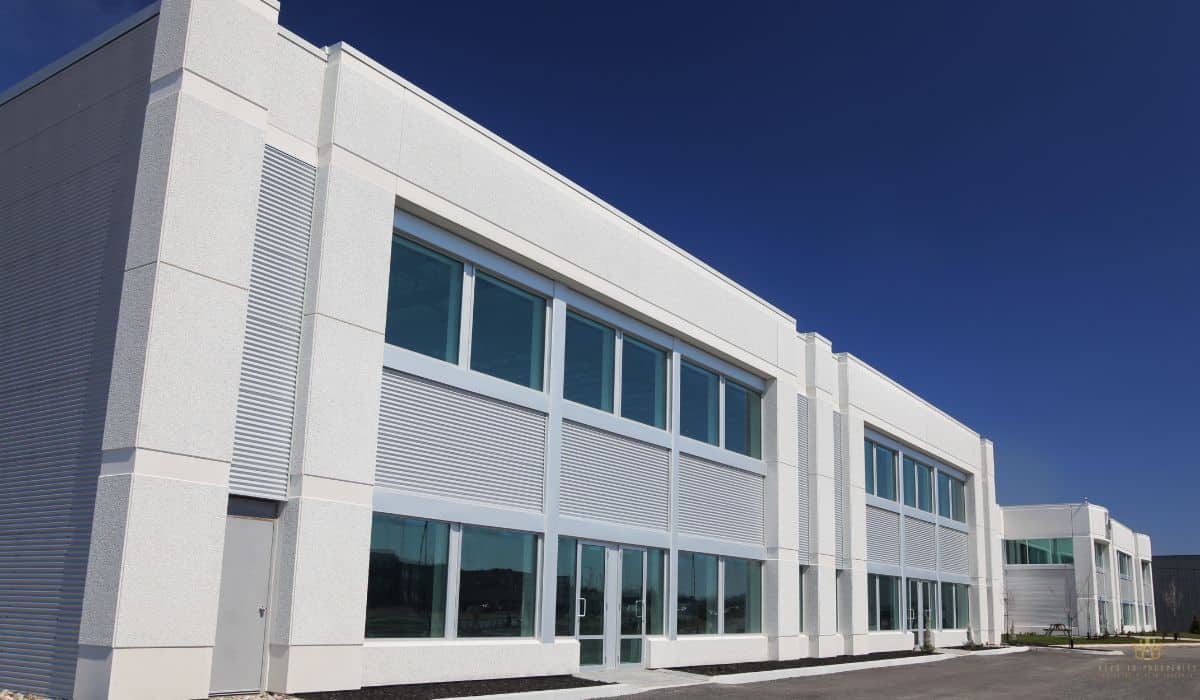
It’s official: new construction momentum is showing no signs of slowing as of March 2025. Over 1.3 million privately-owned housing starts and nearly 1.5 million building permits were issued across the U.S.
From our experience, this surge proves that ground-up development still plays a key role, even as interest rates, tighter lending, and investor caution reshape how capital flows into commercial real estate.
At the same time, seasoned investors continue to eye value-add commercial real estate opportunities, leaning into operational improvements and smart upgrades instead of starting from scratch.
Many professionals are reassessing their strategy toolkit, evaluating which commercial real estate investments best suit today’s market conditions. and comparing value-add commercial real estate vs development.
This article is here to help make that decision clearer. We’ll break down the risks, rewards, and timelines of each strategy so you can make an informed move based on your goals, capital stack, and market outlook. If you’re deciding how to guide clients, diversify a portfolio, or explore new investment angles, you’re in the right place.
If you’re coming from our guide on building a commercial real estate development timeline management plan, this piece will help you weigh the broader strategy behind development.
And if you’re planning to explore our upcoming deep dive on creating a strong repositioning strategy for commercial buildings, this comparison sets the foundation.
We also recommend checking out our core resource on the value-add commercial real estate strategy if you’re looking for a complete walkthrough of that investment approach.
Short Summary
Value-add commercial real estate involves improving existing properties to boost income and reduce expenses, often with lower risk and faster cash flow.
Ground-up development focuses on building new assets from scratch, with higher risk but the potential for larger long-term returns.
Market conditions, project timeline, and capital availability heavily influence which strategy is more viable.
Value-add projects may be better for those seeking predictable income, while development can suit investors aiming for greater upside and willing to wait.
Investors should evaluate personal risk tolerance, market trends, operator experience, and potential value creation before committing.

Understanding Value-Add Commercial Real Estate Vs Development: Key Differences
Both value-add commercial real estate and ground-up development are proven paths to strong returns, but they follow very different routes.
Let’s break down how they compare when it comes to risk, timelines, costs, and income potential. These fundamentals of real estate investing dictate the success of either approach.
What Is Value-Add Vs Development?
Value-add investments focus on improving existing properties through renovations, operational fixes, or better tenant management. The bones of the building are already there. You’re just boosting performance.
The key is identifying existing assets value that others have overlooked.
In contrast, ground-up development means starting with dirt. You’re building from scratch, which allows more control, but comes with more moving parts.
For instance, when repositioning a dated office building, we might suggest cosmetic upgrades, lease restructuring, and energy-efficient retrofits. With development, you’re managing permits, zoning, construction schedules, and lease-up risks from day one.
Risk And Timeline Differences
From a risk standpoint, value-add sits in the middle. It’s not as safe as core assets, but there’s cash flow from the start, even if it’s light. Development, on the other hand, is at the high end of the risk spectrum. Nothing’s guaranteed until tenants move in.
A typical value-add deal might take 2–4 years to stabilize and sell. Development projects? Closer to 4–6 years, depending on complexity.
In one example, a team launched a multifamily project near a university and didn’t generate income for three years, but when it hit 95% occupancy, it cash-flowed big.
Capital Requirements And Income
Value-add investments often require smaller capital injections up front. You can phase in upgrades as cash flow improves. Development needs serious capital before you see a dime.
- Value-add: Immediate but improving cash flow
- Development: Delayed, but potentially higher cash flow
We’ve seen value-add deals boost a property’s net operating income (NOI) by 30–50% after minor upgrades and better lease terms. Development deals can double NOI. It takes time, though.
How Market Conditions Matter
In hot markets with low supply, development can outperform. For example, during a suburban industrial boom, ground-up builds offered 20% IRR while existing assets were overpriced. But in uncertain markets, value-add wins. You can underwrite cash flow from day one and pivot faster.
The bottom line? Know your market, timeline, and risk tolerance before choosing between value-add commercial real estate vs. development.
The Business Case For Value-Add Commercial Real Estate Strategies
Sometimes the best investments aren’t shiny and new. Many successful real estate investments focus on properties with untapped potential.
They’re the ones hiding potential in plain sight. With the right plan, value-add commercial real estate strategies can turn underperforming properties into cash-flow machines.
Let’s walk through what makes this approach so effective, especially across multifamily, office, and retail spaces.

What Are Common Value-Add Strategies?
A solid value-add plan typically includes a mix of physical upgrades and operational improvements. These strategies help boost income while cutting unnecessary costs.
- Operational improvements – Tightening up management, adjusting rent schedules, or improving tenant services. Think updated software, cleaner bookkeeping, and smarter staffing.
- Property upgrades – Targeted renovations like new roofing, energy-efficient windows, or updated interiors. Even curb appeal goes a long way.
- Lease restructuring – Renegotiating under-market leases, shifting to NNN lease formats, or bringing in more stable tenants.
Say a team took over a Class B multifamily building with high turnover and dated finishes. By installing modern appliances, repainting units, and improving lighting in common areas, they were able to raise rents by 15% in under a year.
That’s the power of smart upgrades paired with lease management.
Predictable Cash Flow + Lower Expenses
Value add investments can start generating cash flow right away, even during improvements. And with the right property management, expenses drop fast.
In one case, replacing outdated HVAC systems led to a 25% cut in energy costs across a retail strip. Rent increases weren’t massive, but the NOI climbed just from cutting overhead.
Predictability like that makes these deals especially attractive to investors looking for monthly returns without betting the farm.
Why High-Quality Tenants Follow
Quality tenants want well-maintained spaces and strong ownership. Once improvements are visible, like secured access, updated lobbies, or better signage, new tenants are often willing to pay market rents.
We’ve seen this across asset classes:
- Multifamily: Pet-friendly amenities and laundry facilities brought in young professionals.
- Office: Flexible floorplans and shared conference rooms attracted small tech teams.
- Retail: Refreshed façades and better parking brought back foot traffic.
In short, value-add commercial real estate strategies don’t just fix buildings; they raise tenant expectations and rental income at the same time. The transition from neglected to desirable value add properties can happen surprisingly quickly with the right improvements.
When Ground-Up Development Makes Financial Sense
There are times when starting from scratch simply makes the most sense. Certain investment opportunities specifically call for new construction.
While not for the faint of heart, ground-up development can unlock serious returns, especially when market conditions line up just right. Here’s when going vertical may beat improving what’s already built.
Scenarios That Justify Ground-Up Development
Some markets need more than a facelift. They need more space, smarter design, or buildings that meet today’s codes. In these situations, development can deliver better long-term value than rehabbing older stock.
- High-growth areas with limited inventory
- Urban infill lots where zoning allows for higher density
- Outdated properties that no longer meet tenant expectations
- Build-to-suit opportunities for anchor tenants
Picture a team breaking ground in a city’s fast-growing medical corridor. There wasn’t enough Class A office space to support demand. By developing a new building with LEED certification and EV charging stations, they signed a healthcare group before the first floor was finished.
Meeting Modern Demands With Smart Design
Ground-up development gives investors full control over the layout, materials, and efficiency of the property. This matters when tenants are looking for features like:
- Energy-efficient HVAC systems and lighting
- Open floorplans and high ceilings
- Modern security and access systems
- Built-in amenities like gyms or conference centers
It’s easier to build these from scratch than retrofit an older building. Developers can also take advantage of updated building codes and energy incentives that weren’t around 20 years ago.
Higher Risk, Higher Reward
This strategy isn’t without its risks. Construction delays, cost overruns, and permitting issues can stall timelines and eat into returns. That’s why ground-up development typically requires deeper pockets and longer hold periods.
However, if executed well, returns can significantly outperform value-add plays.
For example, a development deal in a fast-revitalizing submarket might carry a 24- to 36-month timeline. Investors wait longer for cash flow, but once stabilized, the project could yield IRRs of 18% or higher, far above what’s typical in stabilized assets.
How Institutional Investors Approach It
Institutional groups like pension funds and insurance companies, often lean into development to place large amounts of capital and shape entire districts. They usually partner with experienced operators, mitigating some risk by diversifying across multiple projects and regions.
Ground-up development may not offer immediate returns, but when done strategically, it can be a game-changer in long-term portfolio performance.

Making The Right Investment Decision: Value-Add Commercial Real Estate Vs Development
Choosing between value-add commercial real estate vs development isn’t just about which one offers higher returns. Your real estate investment strategy should also match your financial goals, risk tolerance, and investment timeline.
Here’s a practical way to figure out which path fits best:
Step One: Know Your Comfort Level With Risk
Every investor has a different threshold for risk, and both strategies sit at different ends of the spectrum.
- If you’re looking for steady, incremental gains and earlier cash flow, value-add may be a better fit.
- If you’re comfortable waiting longer and navigating bigger variables, development can offer outsized upside.
For example, someone with capital they don’t need for 3-5 years might feel fine taking on a development deal. But someone seeking quarterly distributions might want the relative predictability of a stabilized asset with upside potential.
Step Two: Consider Purchase Price Vs. Potential Value Creation
The entry price tells part of the story. In value-add commercial real estate, investors often purchase below market value, then boost the NOI through improvements. That delta can quickly add equity.
In development, you’re acquiring raw land or a tear-down and covering all construction costs. The margin comes from delivering a product that meets demand in an undersupplied submarket. Timing and execution matter a lot more here.
Step Three: Trust But Verify The Business Plan
Whether it’s a renovation or a new build, the plan should be grounded in solid research. A strong pro forma is helpful, but it’s the market fundamentals that drive results.
- Demand trends
- Competing properties
- Vacancy rates
- Rent growth forecasts
One example: a team is planning to repurpose an outdated retail center. They want to turn the property into mixed-use housing that can outperform projections in a tight multifamily market. However, it could only do that if zoning and neighborhood support match.

Step Four: Passive Investors Should Stick With Experienced Operators
Not everyone wants to be in the weeds. Passive investors can still access either strategy by partnering with seasoned sponsors who have a track record in similar projects.
Look for operators who’ve navigated multiple cycles, understand construction timelines, and communicate well. In both value-add commercial real estate vs development, execution is everything. Choose wisely, and you can sleep at night while your capital works for you.
Final Thoughts
Deciding between value-add commercial real estate vs development is about what works best for your goals, timeline, and appetite for risk. Each path has solid potential when backed by good data, a clear strategy, and the right team.
Both investment strategies require thorough market research
If you’re still unsure, start small, ask questions, and build your confidence deal by deal. Want more tips, insights, or help finding the right fit? Head back to our homepage and let’s see how we can support your next move.
Frequently Asked Questions
What’s The Main Difference Between Value-Add And Development In Commercial Real Estate?
Value-add means acquiring existing properties and making upgrades to boost income and property value. Development, on the other hand, involves building new properties, which takes more time and carries higher risk but may deliver greater returns.
Which Strategy Is Better For Passive Investors?
Passive investors often find value-add commercial real estate more approachable due to quicker cash flow and lower volatility. However, teaming up with experienced developers can also unlock solid long-term gains if the market supports new construction.
How Long Does A Ground-Up Development Project Typically Take?
It depends on the asset class and location, but most ground-up developments take 18 to 36 months to complete. This includes entitlement, construction, lease-up, and stabilization.
Can Value-Add Strategies Work In A Down Market?
Yes, they can. Improving operations or re-tenanting during downturns can position a property to perform better when the market rebounds, especially if purchased at a discount.






